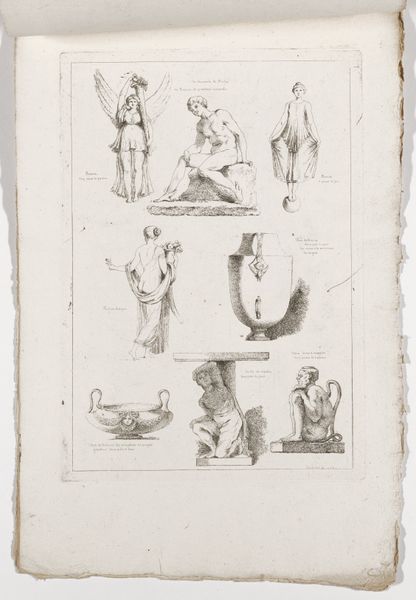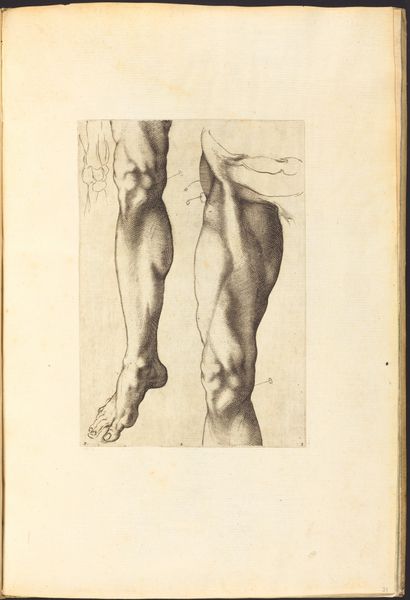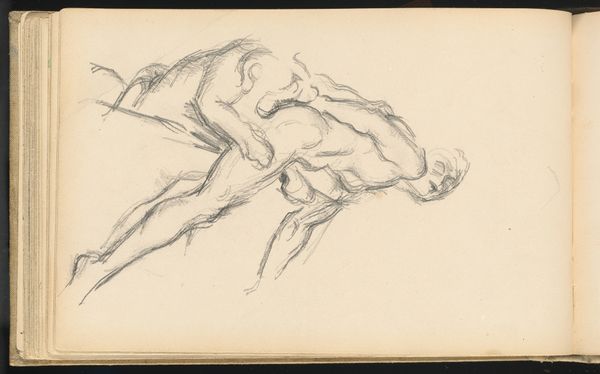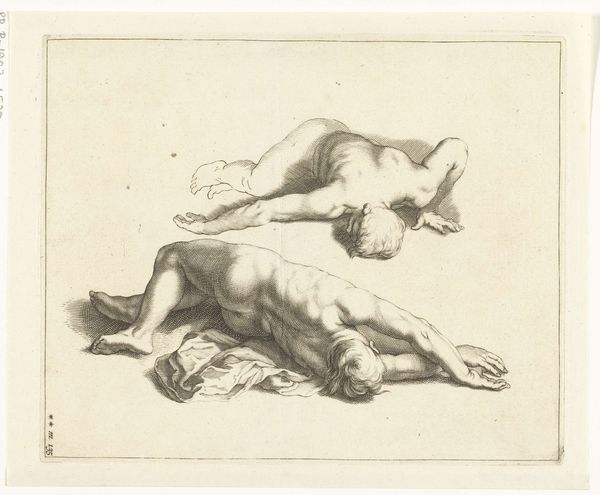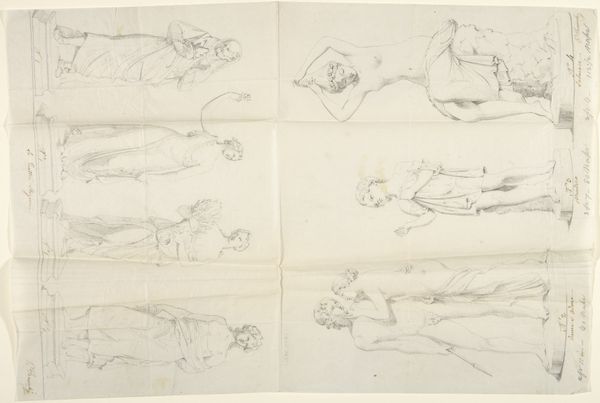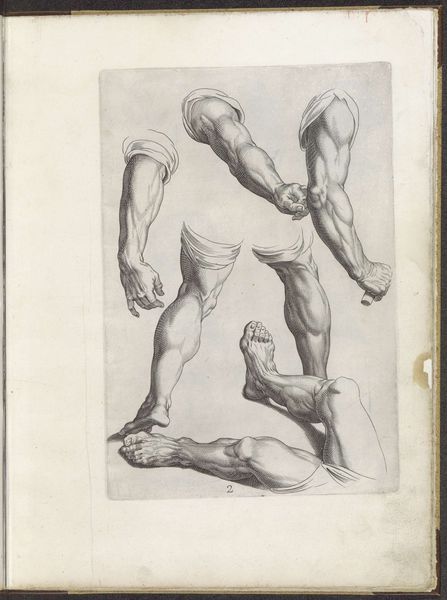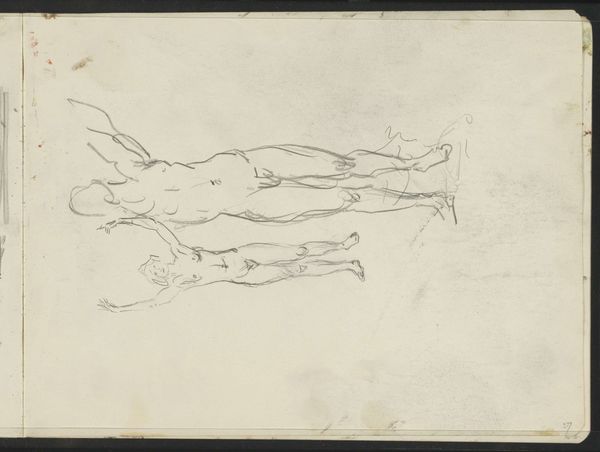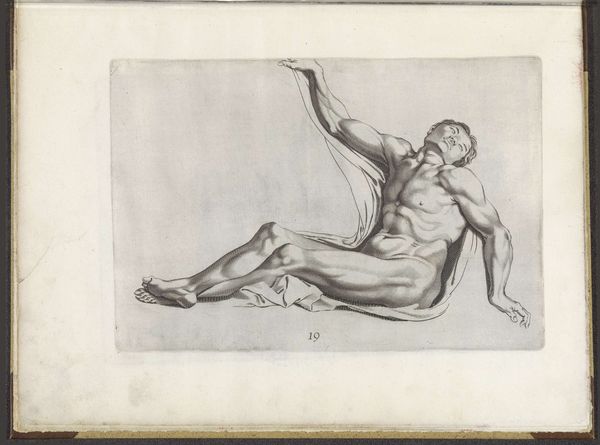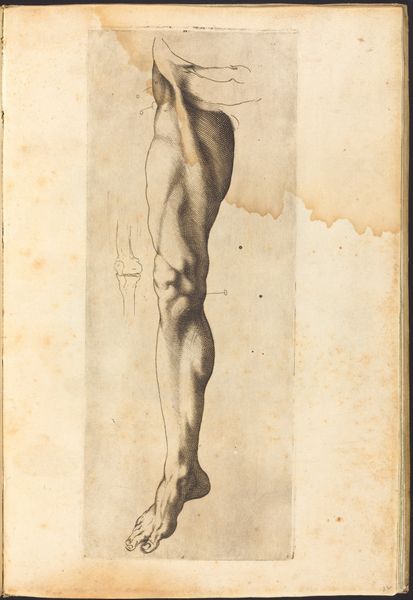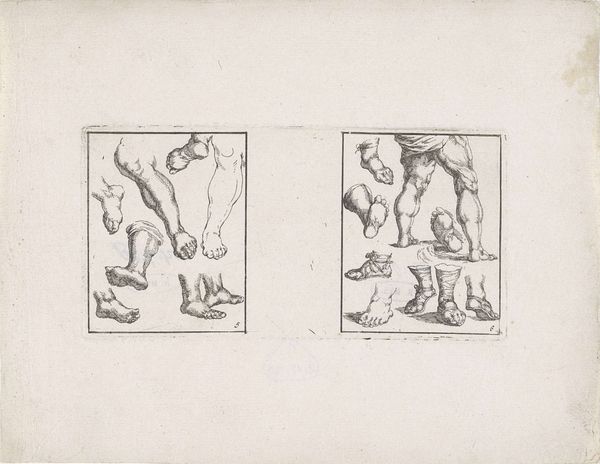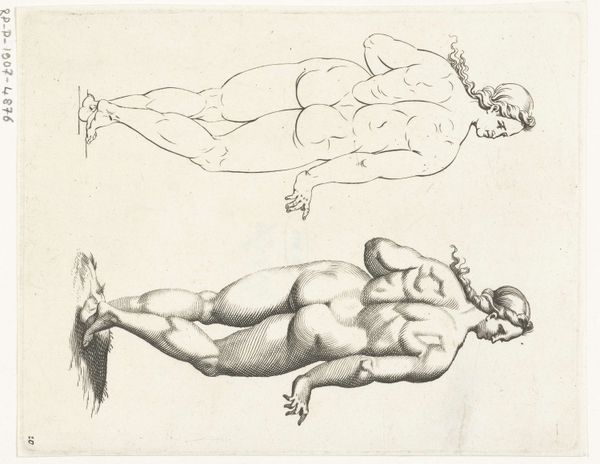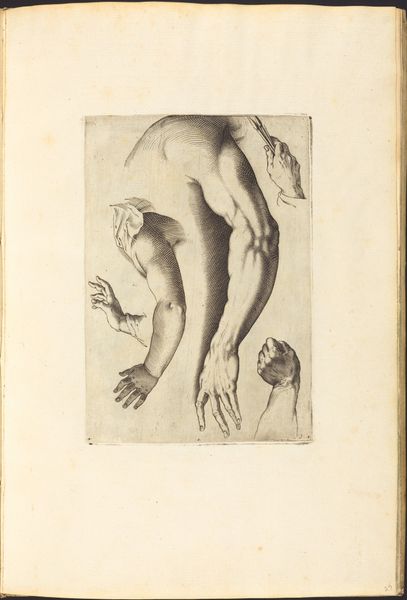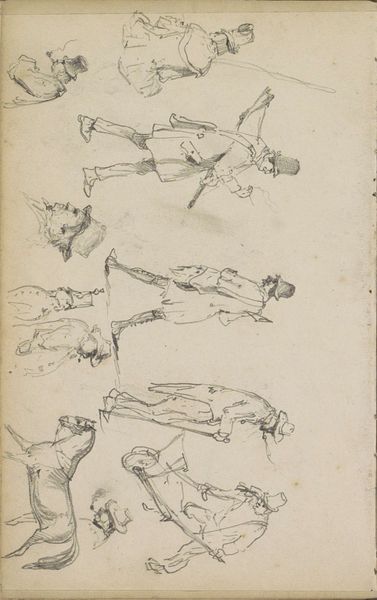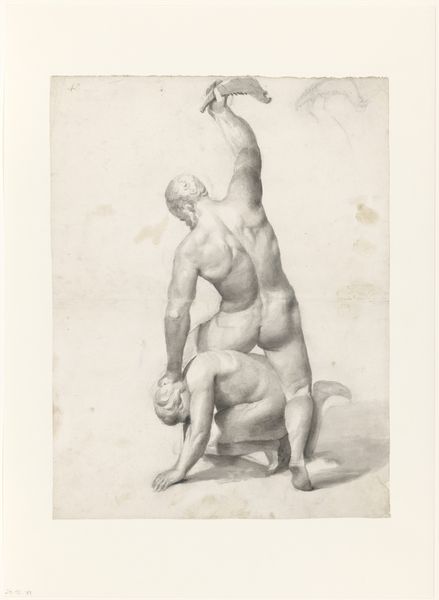
drawing, paper, pencil
#
drawing
#
classical-realism
#
figuration
#
paper
#
pencil
#
history-painting
#
academic-art
Dimensions: height 269 mm, width 210 mm
Copyright: Rijks Museum: Open Domain
Editor: So, this drawing, "Vier paar benen," or "Four Pairs of Legs," is an 18th-century pencil drawing on paper by an anonymous artist. The studies feel quite classical in their realism, but I'm also struck by how raw and unfinished the paper looks, with tears and blemishes. How would you approach analyzing this work? Curator: Given the visible wear and tear of the paper and its status as a study rather than a finished "artwork," it’s productive to see it as a material object shaped by specific historical and social conditions. Consider the economics of art academies in the 18th century. What kind of paper would be affordable and readily available for students? What processes were involved in preparing it, and how might that have affected the drawing itself? Editor: That’s a different lens than I expected. I was immediately thinking about the artistic skill evident in the anatomical renderings. Curator: The skill is undoubtedly present, but we should contextualize its production. For whom was this skill being developed? How was this labor valued within the artistic and economic systems of the time? Are these preparatory drawings pointing towards a finished product commissioned by an external entity? This can allow us to consider not only art history, but economic history through art history. Editor: I see what you mean. It makes me wonder about the artist's access to models and the ethics of representation during this period too. Curator: Precisely. Where do those bodies come from? Whose labor supported their existence and their availability as models for study? How do we interpret the academic study of human forms? Editor: Viewing it this way reveals an entirely new set of questions, about production and material, and labor within artistic and historical structures. It’s not just a drawing of legs anymore; it's about power. Curator: Exactly. Recognizing those layers helps us connect the visual with its material and social reality, hopefully creating richer interpretations.
Comments
No comments
Be the first to comment and join the conversation on the ultimate creative platform.
